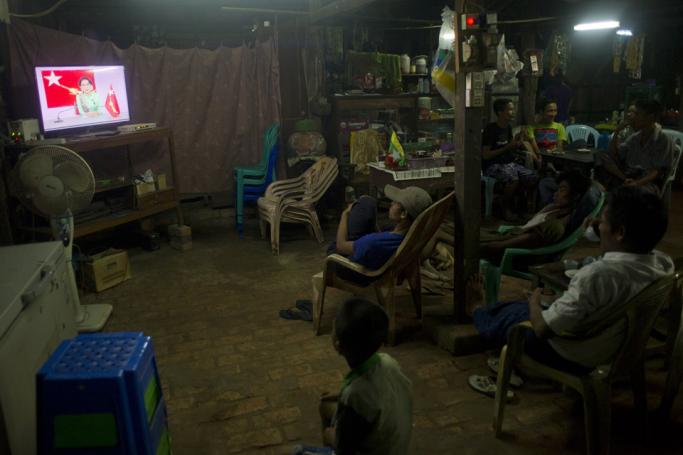As the population of Yangon settles in to adhere to “Stay-at-Home” orders to combat the spread of the COVID-19 pandemic, TV companies have registered a mix of positive growth in hours watching their channels, but a slight slip in advertising income during this period.
According to a survey by Nielsen and MMRD Research Services, COVID-19 and the State of Myanmar Media, September 2020, viewers have been spending more time in front of their televisions, in part due to the lockdowns, restrictions and negative impacts on the country’s economy.
Over the initial COVID-19 pandemic era of March to April, TV viewership went up about 22 percent, according to the report. Viewership increased across all daily show time ranges. Viewers tended to watch about 3.5 hours of TV per day just prior to the pandemic setting in, growing to about 4.6 hours.
According to the survey, the popularity of dance and game shows and news grew during the March-April COVID-19 period. Entertainment was top, with about 170 percent growth.
ADVERTISING MARKET
As the pandemic reached Myanmar in late March, media advertising expenditure “softened” but the typically lower adspend for the Thingyan Water Festival period softened the fall, according to the report.
The pattern is that normally TV advertisement spending takes the highest share in any given year. This year, there was a drop in print advertising in part because some publications reduced or cut distribution for a period at the initial height of the pandemic, in the March-April period.
During this period, restrictions, quarantine and advice to wear masks and socially distance were brought in but for quite some time the death toll stood at only six. The damage and effects on the economy were largely due to the restrictions and advice brought it to protect the country, even though at that time the country appeared to have seen the pandemic pass by, in some ways similar to neighbouring Thailand and Vietnam.
TV remains the money raker when it comes to advertising. Foreign brands and ventures edge out local advertising, a recognition that Myanmar remains a fledgling market with a great deal of potential. For example, Oppo and Happy Mammy baby products have been prominent over the last few months. Ooredoo is a joint venture that is prominent.
Interestingly, there were certain foreign brands and joint ventures that stopped advertising during the March-April 2020 pandemic period survey. These included Coca Cola, Ajinomoto, Honda, Lux and Suzuki.
Some categories saw an increase in adspend during the March-April period. These included motorcycles, dietary oral medicine, coconut milk, talcum powder, tea, and dairy products.
COVID-19 themed adverts were popular, tapping into the problem on many people’s minds.
If companies and advertisers have learnt anything from the pandemic and the negative effects on the Myanmar economy it is that it is important to reach out to audiences and not remain silent during this dip.
Advertisers need to think long term and not get bogged down in the here and now that will soon pass.
There is a need for innovation and also for brands to come together in solidarity.
At this stage, Myanmar’s GDP growth will dip with estimates for this current financial year hovering around 1 percent growth, but with projections that the situation will bounce back next year with about 6 percent growth.












